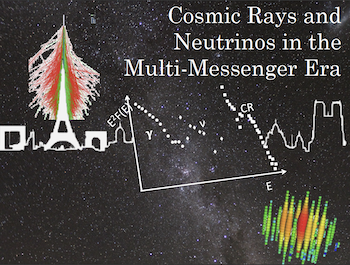Description
RNO-G targets neutrino energies above 10 PeV. It uses the detection of the produced radio signals from the particle showers due to highly energetic neutrinos interacting in the ice. Because the attenuation length of the radio signal in ice is large O(1km), a sparse array of stations can be built, implying large ?effective volumes and sensitivities up to the highest energies. By 2023, 35 stations will be deployed at Summit Station in Greenland. RNO-G will be the ?rst large-scale implementation of the in-ice radio detection technique.
The radio signal propagates through the ice and will travel to the antennas directly or will reflect from the air-ice boundary. The signal is emitted on a full cone of the Cherenkov angle (56 ?) and falls o?ff quickly for higher frequencies for o?ff-cone angles. The signal arrival direction, the angle with respect to the shower axis (viewing angle) and the polarization of the signal altogether are needed to reconstruct the direction of the incoming neutrino.
To reconstruct the direction of the incoming neutrino, fi?rst the vertex position is determined (see 'Energy reconstruction for the Radio Neutrino Observatory in Greenland', Christoph Welling). Next, the reconstructed vertex is used to reconstruct the neutrino direction of the event. A model for the electric field is used and for the reconstructed vertex position the expected response at the antennas are calculated, correcting for hardware responses and propagation e?ffects. The waveforms are ?fitted in the time-domain and a ?Chi2 minimization is used to determine values for the neutrino direction and energy.
This poster shows the results for the directional reconstruction for event directions where RNO-G is the most sensitive, and the analysis e?fficiency for diff?erent directions and neutrino energy ranges are shown. An angular resolution of 7.7 ?degree is achieved.
| Related session | Searching for neutrinos |
|---|

